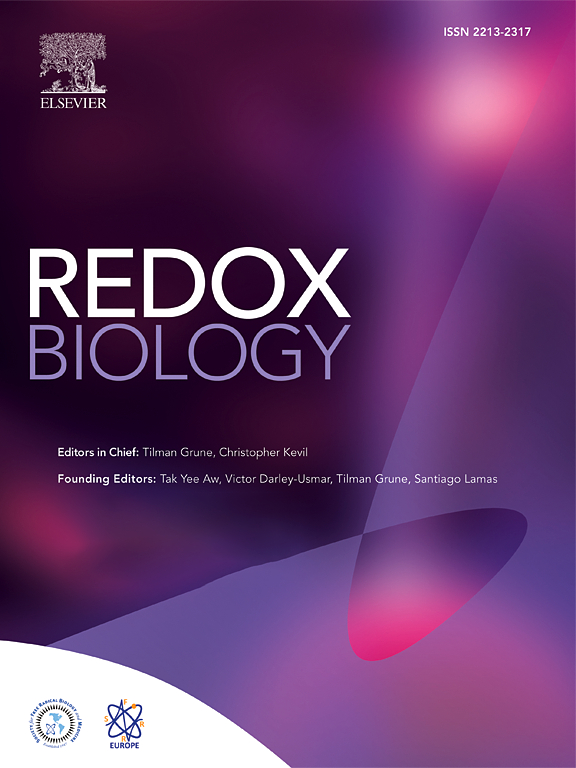Fusion of a bacterial cysteine desulfurase to redox-sensitive green fluorescent protein produces a highly sensitive cysteine biosensor for monitoring changes in intracellular cysteine
IF 11.9
1区 生物学
Q1 BIOCHEMISTRY & MOLECULAR BIOLOGY
引用次数: 0
Abstract
Over the last two decades, the development of fluorescent probes has transformed the way of measuring physiological parameters in intact cells, including in the field of redox biology. We developed a genetically encoded biosensor called CyReB to monitor intracellular cysteine in real time. This biosensor exploits the ability of a particular bacterial cysteine desulfurase to promote the oxidation of reduction-oxidation-sensitive green fluorescent protein 2 in the presence of cysteine. The specificity, sensitivity, and the oxidation-reduction dynamics of CyReB were first investigated in vitro before its in vivo functionality was confirmed by expressing CyReB in Escherichia coli and Saccharomyces cerevisiae cells. Expressing CyReB or an inactive version in wild-type and various mutant strains of Escherichia coli showed that this sensor could be used to monitor intracellular cysteine dynamics, particularly in the context of the cysteine-cystine shuttle system. This work demonstrates how using this cysteine biosensor should provide new insights into the metabolism of cysteine and cysteine-related pathways in various model organisms.

一种细菌半胱氨酸脱硫酶与氧化还原敏感的绿色荧光蛋白的融合产生了一种高度敏感的半胱氨酸生物传感器,用于监测细胞内半胱氨酸的变化
在过去的二十年中,荧光探针的发展已经改变了完整细胞生理参数的测量方式,包括在氧化还原生物学领域。我们开发了一种名为CyReB的基因编码生物传感器,用于实时监测细胞内半胱氨酸。这种生物传感器利用一种特殊的细菌半胱氨酸脱硫酶的能力,在半胱氨酸存在的情况下促进还原-氧化敏感的绿色荧光蛋白2的氧化。首先在体外研究CyReB的特异性、敏感性和氧化还原动力学,然后通过在大肠杆菌和酿酒酵母细胞中表达CyReB来证实其在体内的功能。在野生型和各种突变型大肠杆菌中表达CyReB或无活性版本表明,该传感器可用于监测细胞内半胱氨酸动力学,特别是在半胱氨酸-胱氨酸穿梭系统的背景下。这项工作证明了使用这种半胱氨酸生物传感器应该如何为各种模式生物的半胱氨酸代谢和半胱氨酸相关途径提供新的见解。
本文章由计算机程序翻译,如有差异,请以英文原文为准。
求助全文
约1分钟内获得全文
求助全文
来源期刊

Redox Biology
BIOCHEMISTRY & MOLECULAR BIOLOGY-
CiteScore
19.90
自引率
3.50%
发文量
318
审稿时长
25 days
期刊介绍:
Redox Biology is the official journal of the Society for Redox Biology and Medicine and the Society for Free Radical Research-Europe. It is also affiliated with the International Society for Free Radical Research (SFRRI). This journal serves as a platform for publishing pioneering research, innovative methods, and comprehensive review articles in the field of redox biology, encompassing both health and disease.
Redox Biology welcomes various forms of contributions, including research articles (short or full communications), methods, mini-reviews, and commentaries. Through its diverse range of published content, Redox Biology aims to foster advancements and insights in the understanding of redox biology and its implications.
 求助内容:
求助内容: 应助结果提醒方式:
应助结果提醒方式:


